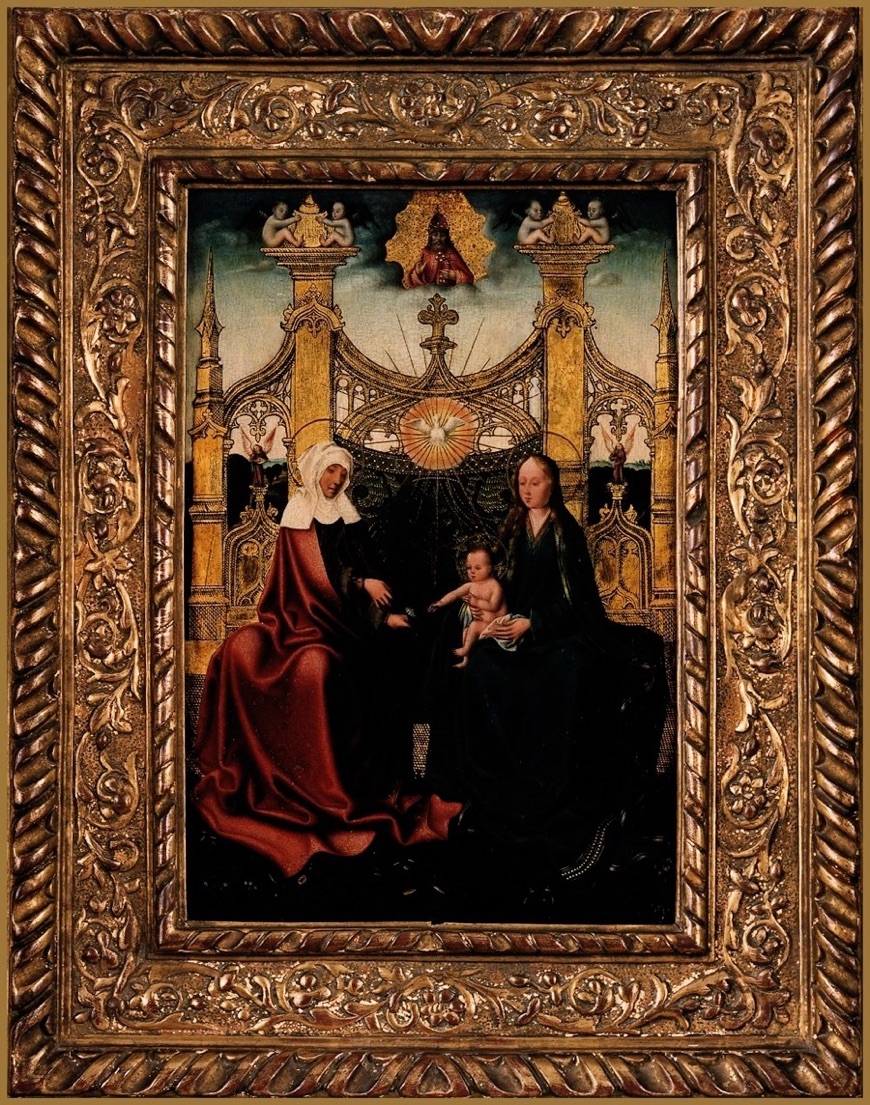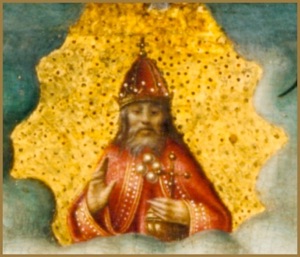Panel
Matsijs, Q. school of (1465-1530)
Antwerp
Mary with Child and St. Anne end of fifteenth century.
A picture like this one, depicting Anne, Mary and Jesus is called Ann in Three. This theme was very popular in the 15th and 16th centuries in Northern Europe. Jesus grandmother is the elderly woman in red portrayed on the left, and mother Mary is the woman in the richly adorned blue cloak. All three have a halo around the head, but the boy has a different halo than those of the mothers. He has a cross-nimbus, indicating his divine nature. The horizontal depicts Christs earthly family, the vertical represents the divine lineage: the Father, who is above, the Son, who is in the middle, and the Holy Spirit, symbolized by a dove in a circle of golden rays. The artist has used several kinds of paint: tempera for the painting and gold paint for the chair of Mary and Anne.
paneel
Matsijs, Q., omgeving van (ca. 1465-1530)
Antwerpen
Maria met Kind en H.Anna.
Eind 15e eeuw
Een afbeelding als deze, waarop de heilige Anna, Maria en Jezus Christus zijn geportretteerd, wordt een ‘Anna te drieën’ genoemd. Het thema was populair in de vijftiende en de zestiende eeuw in Noord-Europa. De grootmoeder van Jezus is de oudere vrouw in de rode mantel links op het paneel, zijn moeder is herkenbaar aan haar rijk versierde blauwe mantel. Alledrie de personages hebben een nimbus om hun hoofd, maar die van het jongetje is een beetje afwijkend. Hij draagt de zogenaamde ‘kruisnimbus’, als verwijzing naar zijn kruisdood. In een horizontale lijn is Christus’ naaste aardse familie afgebeeld. In een verticale lijn is tevens de Heilige Drie-eenheid waarvan hij deel uitmaakt weergegeven. Helemaal boven in de voorstelling troont God de Vader en onder hem, omgeven door een krans van gouden stralen en gesymboliseerd door een duif, de Heilige Geest. De kunstenaar heeft verschillende materialen gebruikt. De personages, het landschap en de lucht heeft hij met gewone verf geschilderd, maar de kolossale zetel waarop de vrouwen plaats hebben genomen met goudverf.





